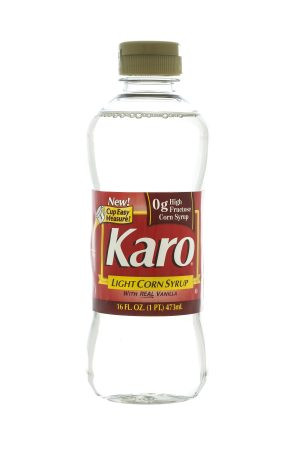Cookies, candy, and ice cream—these treats are undeniably delicious and sweet! But have you ever stopped to wonder, where does all that sweetness actually come from? The answer lies in sweeteners, and sugar in particular has some fascinating origins.
Let’s dive into the journey of sugar and explore some of the most common sources that bring sweetness to our favorite foods.
Sugarcane: A Tropical Sweetheart
 Sugarcane stalks ready for harvest
Sugarcane stalks ready for harvest
Sugarcane is a tall, grass-like plant that thrives in warm, tropical climates. Imagine fields swaying in the breeze in states like Louisiana, Texas, Florida, and Hawaii – these are prime sugarcane growing areas in the United States. This remarkable plant is a natural sugar factory! Through photosynthesis, sugarcane leaves create sugar, which is then stored as sweet juice in its stalks.
The sugarcane harvesting process begins with cutting down the mature stalks. These stalks are then transported to a mill. At the mill, the magic of sugar extraction happens. The cane juice is squeezed out, purified to remove impurities, filtered for clarity, and then crystallized. This initial crystallization results in raw sugar, which has a golden hue. But the journey doesn’t end there! Raw sugar is sent to a refinery for further processing to become the refined white table sugar that we commonly use in our kitchens and find in our treats.
Want to see sugarcane processing in action? Check out this informative video to learn more about how sugarcane becomes sugar: Sugarcane to Sugar Video
Sugar Beets: A Root of Sweetness in Cooler Climates
 Sugar beet harvest
Sugar beet harvest
Did you know that sugarcane isn’t the only plant source for table sugar? Sugar beets are another significant contributor! Unlike their tropical sugarcane cousins, sugar beets flourish in cooler climates. You’ll find sugar beet farms across states like California, Colorado, Idaho, Michigan, Minnesota, Montana, Nebraska, North Dakota, Oregon, Washington, and Wyoming. Interestingly, sugar beets are a major player in domestic sugar production, accounting for roughly 55% of the total sugar produced in the USA.
In sugar beets, the sugar is concentrated in their roots. The harvesting process involves “topping” the beet, which means cutting off the leafy green top part. The sugar beet roots are then sent to a processing factory. There, they are washed clean, sliced into thin strips, and then steeped in hot water. This hot water bath helps to extract the sugary juice from the beet slices. The extracted juice then undergoes purification and crystallization processes, similar to sugarcane, ultimately yielding table sugar.
Curious about sugar beet harvesting? This video provides a fascinating glimpse into the sugar beet harvest: Sugar Beet Harvest Video
High Fructose Corn Syrup: Sweetness from Corn
 Karo Corn Syrup bottle
Karo Corn Syrup bottle
Another common sweetener, particularly in processed foods and beverages, is high fructose corn syrup (HFCS). As the name suggests, corn is the starting point for this sweetener. The journey of corn to corn syrup begins with harvesting corn and transporting it to a milling facility.
At the mill, the corn kernels are crushed and processed to separate the cornstarch from other components of the corn. The cornstarch is then mixed with water to create a liquid. Enzymes, which are natural catalysts, are added to this cornstarch liquid. These enzymes break down the complex cornstarch molecules into simpler glucose molecules, a type of sugar. This liquid is essentially corn syrup.
To create high fructose corn syrup, a further enzymatic process is applied. This process converts a portion of the glucose molecules into fructose, another type of sugar known for its sweetness (and found naturally in fruits). HFCS typically comes in two main forms: HFCS-42 and HFCS-55. The numbers indicate the percentage of fructose content – either 42% or 55% fructose. For comparison, table sugar is composed of 50% fructose and 50% glucose, showing that the sugar composition isn’t drastically different.
Despite some misconceptions surrounding high fructose corn syrup, it’s important to understand its origins and composition. The Corn Refiners Association offers resources to debunk common myths about HFCS and provide factual information: Corn Refiners Association – High Fructose Corn Syrup.
Honey: Nature’s Sweet Nectar from Bees
 Honey dripping from a dipper
Honey dripping from a dipper
When you think of honey, bees naturally come to mind! But how do these busy insects create this golden, sweet liquid? Bees play a vital role in honey production. They visit flowers, using their long, straw-like tongues to extract nectar, a sugary liquid produced by flowers. This nectar is stored in a special stomach-like organ called a crop or honey sac.
Back at the beehive, the honey-making process continues. Bees regurgitate the nectar and “chew” it, further breaking down complex sugars. This processed nectar is then spread throughout the honeycomb cells. To reduce the water content and thicken the nectar into honey, bees fan their wings vigorously, speeding up evaporation. It’s truly a remarkable and labor-intensive process!
To explore the fascinating world of bees and honey further, resources like The Beeman offer engaging learning materials. For older students, pollinator-themed puzzles like this one can provide educational fun.
You can also delve deeper into the world of honey and beekeeping through this three-part blog series: Honey Blog Series Part 1, Part 2, and Part 3.
Want to make STEM learning sweeter? Discover simple science experiments using cookie ingredients in this blog post!

